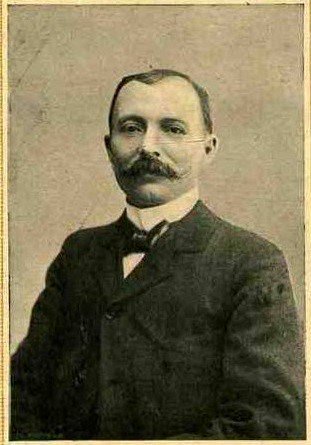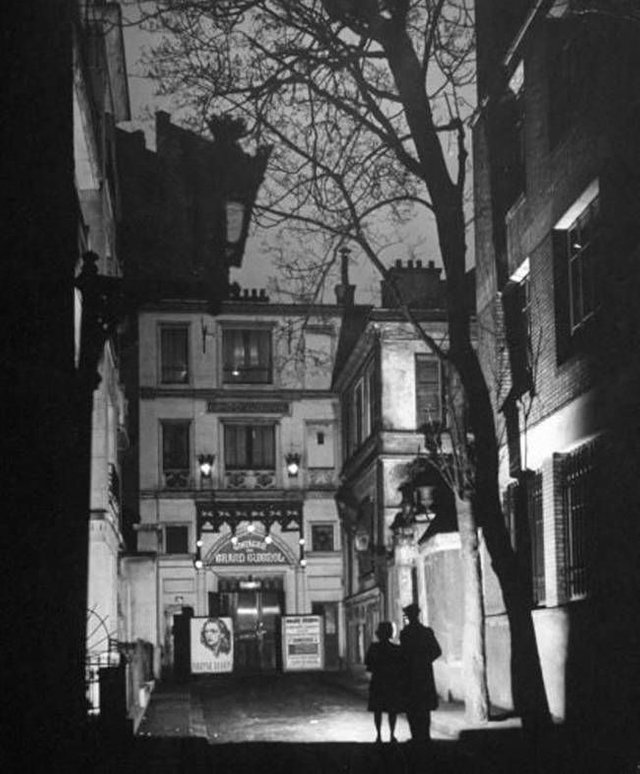The Grand Guignol Theater: When Paris created the gore
The translation of Grand Guignol is "Great Puppet Theater" and it implies with this name that the existence of the human being is like that of a doll. This name also refers to the character Guiñol who made sarcastic criticisms and represented the Lyon workers.

Rapes, mutilations, murders, prostitution, illness, satanic rites, naked sexuality, any conceivable form of moral degradation, all of which came together in this hyperrealistic, sickly and bloody theater, created by Oscar Metenier in the year 1984. Using as headquarters a building built at the beginning of the nineteenth century that originally functioned as a chapel where Didion, a famous Parisian priest polemic for his speeches full of fanaticism, his descriptions of hell and the torture of souls, gave the pulpit a theatrical sense that managed to bring crowds of faithful impressed by excessive verbosity.
Which after a fire, was rented by the painter Georges Antoine Rochegrosse, whose most recognized work ("Andromaque") caused a sensation during his exhibition, thanks to the brutality so graphic that his work presented.

Méténier acquired the building after Rochegrasse left claiming that the ruins were haunted. The theatrical agent saw a business opportunity and began to spread the rumors; In addition, it used the Gothic architecture of the place to accentuate the stories already known to Parisians.
The public witnessed its first production in the year of 1896, which was a real disaster, people experiencing various discomforts, vomits, fainting and requests for help to the police.

Oscar Metenier
That first piece contained the scene of a guillotine execution. The decapitation was done with such realism, taking care of even the smallest detail, which seemed to have really happened in front of everyone. Totally surprised, the attendees believed that the actor had been beheaded grotesquely and began to leave midway through the show.
Métérier was fined and the theater temporarily closed, but the repercussion of his risky act had already taken over the streets in Paris and everyone wanted to see the play. When the Grand Guignol returned to function, the ranks turned the block. Knowing that he had found a very profitable niche, Méténier began presenting a new show each week, trying to overcome the previous one in blood, terror and impact.

Those who had the courage to sit in the front row were splashed with fake blood and experienced the anguish of witnessing, almost first-hand, the most grotesque forms of torture. The theater was so well organized that it had special rooms where the spectators could leave if they were too impressed by the horrors exhibited.
The Grand Guignol only allowed a police delegate to know some of the tricks he used behind the scenes, this in order to make it clear to the justice that nobody died on stage. They even had a secret formula for the artificial blood used. In one of the billboards advertised "our blood is always fresh and customers who do not want to take it home in their clothes, should avoid the seats near the box."


Max Maurey
However, the theater would not reach its highest level until 1898, at which time it sold the theater to Max Maurey, who reduced the acts represented to four or five, increasing the level of violence and sexuality in the performances, while the spectators held out the impact of what they saw in order to satisfy their morbidity, their desire for extraordinary emotions, perhaps as a way to unleash their darkest fantasies.
Extremely grotesque subjects, such as necrophilia, were addressed in several works. In most cases, the climaxes of the works were the horrible tortures practiced by sadistic executioners. Maurey was so dedicated to his horror show that he used to buy original medieval torture instruments, and those he could not get recreated from illustrations and models.
The most famous work

"Un crime dans unf maison de fous" reached enormous relevance at the time and was a success among the audience. Between the 1930s and 1940s the Grand Guignol presented countless times this work written by the playwright André de Lorde, a talented writer discovered by Maurey himself who would give him more than 100 works.
The plot of this piece happens in an asylum, and tells the story of a teenager named Esperanza who is taken to this place by mistake. The news of his upcoming freedom provokes a series of rebellions among the inmates, many of these maniacs with horrible deformities, who try to prevent the young woman from abandoning them at all costs.
Filled with rage at the attempted escape, they lead the young woman into the depths of a dungeon in the basement of a place where they discover a variety of torture tools. In one of the most terrible scenes in history, one of these madmen believes that a bird inhabits the head of the girl, so he tries to free it with a hammer and a chisel.
A piece of theater so grotesque that, according to some records, one night recorded the record of 38 blackouts among the audience (audience of 80 people). The archaic special effects were a secret guarded with suspicion, mainly because they were quite effective.

Between 1914 and 1930 the direction of the theater was in charge of ** Camille Choisy **, who thanks to his studies of medicine and knowledge of anatomy, contributed to the cause with his experience. Later Jack Jouvin followed, which softened the presentations enough after a spectator suffered a fulminating heart attack during a show.

Eva Berkson and Derek Dundas
British filmmaker Derek Dundas and his wife, comedian Eva Berkson, were in charge of the establishment during World War II. The couple was in charge of the Grand Guignol when the Nazi occupation occurred. In 1943, a group of actors came on the scene disguised as Nazi soldiers who practiced all kinds of tortures against civilians.
This fact angered the Germans enough and caused the couple to leave the country. The Nazis put in a new director and the theater continued to function, attracting thirsty crowds of morbid. After the end of the war, the Dundas returned to the theater as authentic war heroes.
The end of the show

The style of the Grand Guignol was copied and moved to several countries, although in some places it was successful, in others it was considered an absurd and decadent show, even several governments came to prohibit the shows with the Grand Guignol style.
The public began to decrease after the end of the Second World War. In addition, the world seemed to have acquired a new aversion to blood and horror, especially after witnessing those terrible years of war.
We will never be able to match the horrors of Auschwitz or Buchenwald in our pieces. In a way, everything we had done to impact the audience had been amplified in the real world.
Charles Nonon
The Grand Guignol theater closed its doors in 1962, after having lost its meaning, perhaps because reality had already exceeded what was represented in its tables, of course, being the inspiration for theatrical movements such as the Panic Theater, created by Jodorowski, Arrabal and Topor, Dalí, Buñuel, the Gore in horror movies, etc.

The building that housed the theater is still standing in Paris, currently being the headquarters of The International Visual Theater, where works for the disabled are presented.